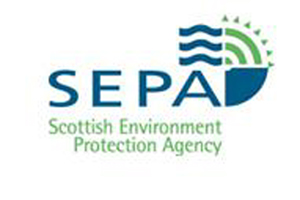TOXIC sludge linked to cancer and Alzheimers could be infecting the entire country because of previous water and sewage treatment that was carried out byScotland’s local authorities, according to a new report.
According to the Scottish Environmental Protection Agency tens of thousands of cubic metres of harmful waste is contaminating areas including Barrhead, Coatbridge, Falkirk, Inverness, Aberdeenshire and even way up in Orkney.
It is unknown how much toxic waste is being held in each lethal pothole but the one in Cupar in Fife is said to contain around 2000 cubic metres – nearly the size of an Olympic swimming pool.

The investigation on sludge lagoons found that the pollution was caused from when drinking water was treated with an aluminium compound that was used to remove impurities.
The resultant sludge that is left over is contaminated with aluminium and this has been linked with a list of health problems including Alzheimers and breast cancer.
SEPA manager Colin Anderson said: “Almost all of these sites are still within the cartilage of existing Scottish Water works and are being maintained and managed to some extent.
“To develop greater understanding, Scottish Water is commissioning an extensive study to assess these sites and any potential risks they pose.
“We will continue to work with Scottish Water to ensure remediation is undertaken where required.”
Green MSP Alison Johnstone is demanding that the pollution-filled potholes be cleaned up straight away.
She said: “Many people will be shocked to learn of these potentially toxic lagoons dotted around Scotland.
“These lagoons are proof that we need sustainable infrastructure systems to minimise our impact on the environment and prevent future generations being left to clear up the mess we leave behind.”
“Nasty legacy”
Environmental campaigners said that aluminium toxins can ‘leach’ – this is when the material is broken down in a liquid and infects the land around it – and it will prove disastrous for the surrounding area.
Dr Richard Dixon, Director of WWF Scotland, said: “Aluminium is not something we want leaching out because it represents a danger to human health and wildlife.
“This is a large a potentially nasty legacy Scotland needs to deal with. The public need to be assured that these sites are currently in good condition and that there is a detailed plan to make sure they stay that way.
“But we need to look for permanent ways to remove this threat to the environment.”
Scottish Water, who inherited responsibility for the hazardous lagoons in 2002, claim they first existed back when local councils were in charge of providing water and waste treatment.
A spokesman said: “Our focus is always to ensure we manage the material in a sustainable way. For the sewage sludge this means recycling it to land to use its nutrients.
“It is not believed these sites present a particular risk. We are delivering a project to undertake surveys to understand the nature of them and to confirm environmental issues.
“This will help determine the means to manage them in agreement with SEPA.”
Norovirus
In the wake of the toxic sludge revelations, the organisers of the Glasgow 2014 Commonwealth Games could move the triathlon’s swim location to stop athletes getting poisoned.
The three-event competition that also involves a 40km cycle and a 10k run was scheduled to start with a 1500m open-air swim in Strathclyde Loch.
But concerns over the loch’s water quality tests mean that an alternative venue needs to be found incase £150,000 of treatment works proves unsuccessful.
It is not the first time athletes have been hit by illness in Scottish water.
An open air swim in Strathclyde Loch on 23 June left 80 per cent of participants with stomach cramps, vomiting and diarrhoea.
57 of the 70 competitors at the Western Districts Open Water Swimming Championships tested positive for norovirus (the winter vomiting bug).
North Lanarkshire Council bosses claimed the health scare was caused by a heavy downpour that contaminated an otherwise clean stretch of water.
John Wilson, Central Scotland MSP, said: “Failure to attract the triathlon would be a major blow to the economic benefits expected for North Lanarkshire.”
A Glasgow 2014 spokeswoman said: “We are working in partnership with a number of organisations within a technical advisory group tasked with ensuring the loch in Strathclyde County Park continues to be used for sporting and recreational purposes and as the Triathlon venue for the 2014 Commonwealth Games.
“As part of this process we are developing contingency plans to mitigate against risks and issues.”
